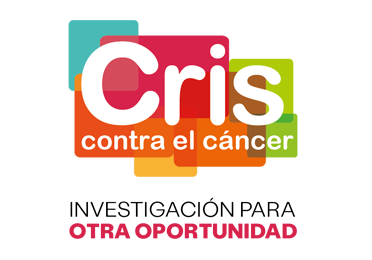
Barcelona, May 07, 2020.- Researchers are close to bringing a new cancer treatment that inhibits the oncoprotein Myc to the clinic. The targeted treatment is based on more than two decades of research, which continues to improve knowledge of the biology of cancer.
Although it has been known for many years that Myc plays an important role in the development of tumors, until recently it was considered a difficult target to attack. Dr. Laura Soucek, head of the Mouse Models of Cancer Therapies Group at the Vall d’Hebron Institute of Oncology (VHIO), has become one of the top experts in this field after more than 20 years researching how to overcome this problem and target Myc for cancer treatments.
Recently, three publications by Dr. Soucek’s group have summarized the latest advances in the development of therapies specifically targeting Myc: one in the journal Expert Opinion on Therapeutic Targets in February and two in the journal Cells in April. These three review articles deal with aspects including the biophysics of Myc, the development of Omomyc – the Myc inhibitor designed by Dr. Soucek – and the therapeutic potential of Myc inhibition specifically for lung cancer.
Myc, an ever-changing protein
The latest article published was in a special edition of the journal Cells on Myc in April. In it, Dr. Laura Soucek worked with Dr. Marie-Eve Beaulieu, cofounder of Peptomyc SL, a spin-off company from VHIO, and Dr. Francisco Castillo, also of Peptomyc SL. The article deals with the structural and biophysical features of Myc.
One problem that, until now, has led Myc to be considered an impossible target for treating cancer lies in the protein’s behavior, because it does not have a strongly defined structure and is constantly changing. “Myc plays a central and irreplaceable role in human tumors but it is difficult to design an inhibitor to fit it. It’s like having to develop a key for a lock that’s constantly changing shape,” said Dr. Beaulieu. This is the reason there is still no approved drug against Myc. “The ones developed so far are not specific and recognize similar molecules as well as Myc, which can cause side effects,” she added.
The value of Myc as a target in lung cancer
As with most cancers, the Myc gene plays an important role in the progression of lung cancer tumors and their resistance to treatment. Lung cancer is currently the leading cause of cancer death in the world. Despite the advances in immunotherapy and personalized treatments over the last few years, the prognosis for lung cancer patients is still dire. The article published in Expert Opinion on Therapeutic Targets and written with the help of Dr. Daniel Massó-Vallès and Dr. Beaulieu of Peptomyc S.L. reviews Myc inhibitory strategies aimed specifically towards clinical application in lung cancer. “We have compiled the most recent literature on the development of Myc inhibitors and we have seen that they represent an unprecedented opportunity to intervene in the progression of lung cancer and its frequent resistance to treatment,” said Dr. Soucek. She also added: “Myc is also related to immune system suppression. Hence, the use of Myc inhibitor drugs in combination with immunotherapy is another highly promising approach.”.
Notably, Myc is a family consisting of three proteins: c-Myc, N-Myc and L-Myc. Although there are differences between the different members of the family, the literature reviewed by Dr. Soucek, Dr. Beaulieu and Dr. Massó-Vallès has been useful for seeing how some Myc inhibitor strategies might work against all of them.
22 years of Omomyc
The second article published this month in the special edition of Cells on Myc analyses the state of development of Omomyc, the best characterized Myc inhibitor to date designed by Dr. Soucek herself. Work on this mini-protein began more than two decades ago, in 1998, when it was designed and published for the first time as a laboratory tool to study the effect of Myc modulation.
The article notes that Omomyc has shown various properties as a promising tool for treating various kinds of cancer. Importantly, it has displayed the capacity to induce cell death in tumors but not in normal cells. The article also explains how Omomyc can halt the cross-talk between the tumor and its microenvironment and, in this way, trigger immune cell recruitment.
“Many of these capabilities of Omomyc were described in genetically modified mouse models but translating this laboratory proof of concept into the clinical practice has not been an easy task,” said Dr. Soucek. Despite this, she noted that “the therapeutic effect of the purified Omomyc mini-protein we described recently, following the discovery of its cell penetration capacity, represents a complete change of paradigm”. Dr. Soucek believes that all these advances over the last few years represent another step towards bringing Myc inhibition to cancer patients.
“We expect clinical trials to begin in 2021 and, over the next few years, we will find out much more about the safety and, above all, the effectiveness, of Omomyc treatment. It will first be applied to lung, breast and colorectal cancer, but we hope that in the future this can be expanded to many other types of tumor.”
The article just published tells the story of the two decades of work with Omomyc. “In this article we have detailed the whole path we have followed with Omomyc, including its design and first tests in cells or even the creation of the first transgenic mouse based on Omomyc. This was used to demonstrate that Myc could be attacked, causing a surprising anti-tumor effect with much milder side effects than chemotherapy,” said Dr. Massó-Vallès.
All this work has shown that Myc inhibition is a safe, effective strategy: it shares the advantages of targeted treatments affecting cancer cells but not neighboring normal cells, but at the same time overcomes some of their disadvantages, such as the development of resistance. “This is because Omomyc attacks a central, non-redundant function in most if not all tumor cells,” pointed out Dr. Soucek.
“The value of this article also lies in the fact that it is the first review of all the material published on Omomyc over more than 20 years. It offers us a historical view summarizing everything known about this special Myc inhibitor due to soon reach the clinic” concluded Dr. Massó-Vallès.











